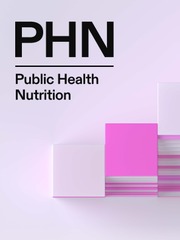No CrossRef data available.
Article contents
Content quality versus sharing practices on social media: A cross-sectional analysis of nutrition information on Twitter
Published online by Cambridge University Press: 10 April 2025
Abstract
To use the validated Online Quality Assessment Tool (OQAT) to assess the quality of online nutrition information.
The social networking platform formerly known as Twitter (now X).
Utilising the Twitter search application programming interface (API; v1.1), all tweets that included the word ‘nutrition’, along with associated metadata, were collected on seven randomly selected days in 2021. Tweets were screened, those without a URL were removed and the remainder grouped on retweet status. Articles (shared via URL) were assessed using the OQAT, and quality levels assigned (low, satisfactory, high). Mean differences of retweeted and non-retweeted data were assessed by Mann-Whitney U test. The Cochran-Mantel-Haenszel test was used to compare information quality by source.
In total, 10,573 URLs were collected from 18,230 tweets. After screening for relevance, 1,005 articles were assessed (9,568 were out of scope) sourced from: professional-blogs (n=354), news-outlets (n=213), companies (n=166), personal-blogs (n=120), NGOs (n=60), magazines (n=55), universities (n=19), government (n=18). Rasch measures indicated the quality levels; 0-3.48, poor, 3.49-6.3, satisfactory and, 6.4-10, high quality. Personal and company-authored blogs were more likely to rank as poor quality. There was a significant difference in quality of retweeted (n=267, sum of rank, 461.6) and non-retweeted articles (n=738, sum of rank, 518.0), U = 87475, p=0.006, but no significant effect of information source on quality.
Lower-quality nutrition articles were more likely to be retweeted. Caution is required when using or sharing articles, particularly from companies and personal blogs, which tended to be lower-quality sources of nutritional information.
Keywords
- Type
- Research Paper
- Information
- Creative Commons
- This is an Open Access article, distributed under the terms of the Creative Commons Attribution licence (http://creativecommons.org/licenses/by/4.0/), which permits unrestricted re-use, distribution and reproduction, provided the original article is properly cited.
- Copyright
- © The Author(s), 2025. Published by Cambridge University Press on behalf of The Nutrition Society


